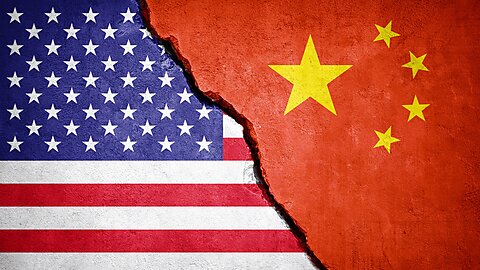Unleashing Innovation in Light of U.S.-China Competition

Clark Packard and Alfredo Carrillo Obregon
Technology and innovation are at the forefront of the geostrategic competition between the United States and China. Who will dominate the commanding heights of technology in the 21st century is a paramount question in the power balance between the world’s two largest economies. Yet policymakers seem intent on breaking up America’s most globally competitive and innovative firms while doing nothing to liberalize desperately‐needed high‐skilled immigration. An in‐depth legal analysis of anti‐trust claims and potential cases against American tech giants is beyond the scope of this blog post, but aggressive efforts to pursue such cases and moreover, impose additional regulations on U.S. high‐tech industries has important geopolitical and economic implications that must be acknowledged.
U.S. firms are world leaders in advanced sectors and innovation. According to a recent report by the Boston Consulting Group (BCG), 25 out of the 50 most innovative companies are based in the United States. The companies at the top of the list were Apple, Tesla, Amazon, Alphabet, and Microsoft, all of which are American‐based multinational firms. Also in the list is Nvidia, which has invested heavily in artificial intelligence (AI) and recently eclipsed over one trillion dollars in market capitalization. Similarly, Google, Amazon, Microsoft, Apple and Facebook collectively spend over $200 billion annually in research and development (R&D) and nearly another $200 billion in capital expenditures.
One reason why U.S. multinationals can invest so heavily in cutting‐edge R&D and thus be at the forefront of tech innovation is because they have harnessed the power of globalized supply chains and globalized production, which academic studies have found correlates with higher levels of R&D activity and innovation. Notably, the U.S. high‐tech manufacturing sector emerged as a global leader in this regard. As our Cato colleague Scott Lincicome recently noted, the computer and electronic industry has pioneered a factoryless model, where U.S.-based affiliates concentrate on “knowledge”-intensive activities while overseas suppliers managed physical production. This approach contributed significantly to breakthrough patent growth and the majority of U.S. manufacturing value‐added growth in the past decades.
This type of innovation and global production has made the United States dominant in advanced sectors, which explains why American‐based multinational firms account for such a high share of the top 100 companies’ market capitalization. According to recent report from PricewaterhouseCoopers (PwC), the world’s top 100 companies account for $30.9 trillion in market capitalization. U.S.-based multinational firms account for 70 percent—or $21.7 trillion—of this market capitalization.
While the United States is locked in a high‐stakes competition with China for dominance in the next wave of technological innovation, proposed regulations will undermine U.S. efforts to maintain its lead in the technology race. Breaking up large tech firms may satiate populist demands but it will undermine U.S. innovation and competitiveness vis‐à‐vis China and Chinese competitors like Tencent and Alibaba. Unfortunately, many U.S. politicians nonetheless continue to seek to regulate and even break up these firms. In July 2022, Senator Amy Klobuchar and Charles Grassley released the American Innovation and Online Choice Act, which proposes a range of antitrust regulations aimed at reducing the size of many of the technology companies on BCG’s innovation list. Similar bipartisan efforts have been proposed in Congress in recent years.
In fact, contrary to policymakers’ aims, such regulations could have a chilling effect on market entry and competition. In their crusade to limit the growth of the tech giants, policymakers risk imposing industry‐wide regulations that, counterintuitively, are more burdensome for smaller firms (particularly if the incumbent giants in these industries have an outsized lobbying influence in the creation of these regulations). Competition fuels innovation, and without competition, incumbent firms are less inclined to innovate. The result? Precisely, less dynamism in the high‐tech sectors that the United States should be intent on dominating, and in turn, greater vulnerability relative to Chinese competitors.
Importantly, innovation is not only desirable for abstract economic and geopolitical purposes. It is also desirable as a means to improve the lives of Americans who increasingly purchase goods and services, directly and indirectly, from these and other high‐tech firms. Innovation prevents anti‐competitive monopolies. About 15 years ago, many industry experts thought that Nokia and MySpace would dominate the smartphone and social media market for years to come. When these companies failed to innovate, more innovative competitors like Apple and Facebook eroded the incumbents’ market share. Thus, while anti‐trust enforcement has been guided for nearly 100 years by the consumer welfare standard—that is, regulators evaluating whether business conduct harms consumers—recent legislative proposals would upend this approach: A 2021 analysis by NERA Economic Consulting estimates these regulations would force the five largest tech companies to incur over $300 billion in additional costs. These costs would likely mean less R&D, less innovation, and less quality and efficiency—all resulting in higher costs for consumers, too. For instance, the study concludes that the implementation of these new laws would probably lead to the termination of Amazon Prime, which would cost the average consumer over $148 annually.
Legislation in Congress is far from the only risk to the dynamism of America’s high‐tech industries: Anti‐trust proceedings at the Federal Trade Commission (FTC) could also undermine consumer‐benefitting innovation. Take, for instance, the FTC’s planned comprehensive antitrust lawsuit against Amazon, which will challenge a wide range of Amazon’s business practices. Amazon is on the forefront of making investments to provide consumers with improved and more affordable goods and services. Amazon acquired Twitch in 2014 to enhance its streaming services market and Whole Foods in 2014 to expand its product range to include organic and fresh products. More recently, the company also announced the launch of Bedrock, which will provide cutting‐edge language models to compete with OpenAI and Google. Amazon is also on the path to power its operations with renewable energy by 2025. A concerted push to break‐up Amazon could undermine these efforts and investments—again, to the detriment of the American economy and American consumers.
Meanwhile, in an increasingly globalized world with more options than ever for high quality talent, U.S. immigration policies undermine efforts to push the envelope on precisely the type of high‐tech R&D needed to outcompete China. Eric Schmidt, the former CEO of Google, recently wrote in Foreign Affairs:
“[T]he United States must invest in the input that lies at the core of innovation: talent. The United States boasts the world’s top startups, incumbent companies, and universities, all of which attract the best and the brightest from around the world. Yet too many talented people are prevented from coming to the United States by its outdated immigration system.”
Indeed, the immigration system desperately needs reform. Current law is riddled with barriers to recruiting and retaining the world’s top scientists and engineers, which puts the United States at a disadvantage to countries more welcoming of high‐skilled immigrants such as Canada and the United Kingdom.
After examining new data from the Organisation for Economic Co‐operation and Development, our Cato colleague David Bier recently noted that the United States lost more published scientists than it gained in 2021 while China gained more than 2,400 published scientists.
To see how this plays out in real life, consider the story of Erdal Arikan, a Turkish citizen and graduate of the California Institute of Technology and the Massachusetts Institute of Technology. Arikan authored a paper that provided the theoretical basis for faster and more accurate data transfers. Yet Arikan was unable to obtain a green card through an academic position “or funding to work on this seemingly esoteric problem in the United States.” Arikan was forced to return home to Turkey and instead found opportunity in China. As the essay notes, “It turned out that Arikan’s insight was the breakthrough needed to leap from 4G telecommunications networks to much faster 5G mobile internet services.” American immigration policies made Huawei, China’s technology giant, the beneficiary of Arikan’s genius and today holds over two‐thirds of the patents related to Arikan’s work.
Or consider the recent story on Saudi Arabia’s competitor to ChatGPT, which is being built at King Abdullah University of Science and Technology (KAUST). Chinese scientists and engineers are largely responsible for the work being done at KAUST. Yet, as noted in the Financial Times, “Many Chinese nationals with AI expertise have chosen to work at KAUST because they have been prevented from studying and working in the United States […]” Indeed, foreign talent will continue to look for opportunities outside the United States as long as American policymakers refuse to adapt immigration policies to the realities of a globalized 21st century economy.
Onerous regulations and immigration restrictions can slow innovation, reduce investment, and hamper product development. If American policymakers are serious about countering China’s rise at the nexus of technology, and truly want to foster economic growth and innovation while maintaining global competitiveness, it is crucial to support and encourage a vibrant ecosystem of companies, while avoiding counterproductive efforts that hinder their potential.
Cato Institute interns Dyuti Pan Dya and Aidan Meath contributed to the writing of this blog post.





